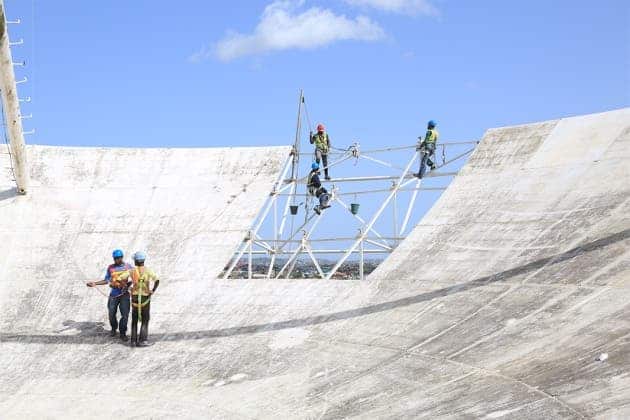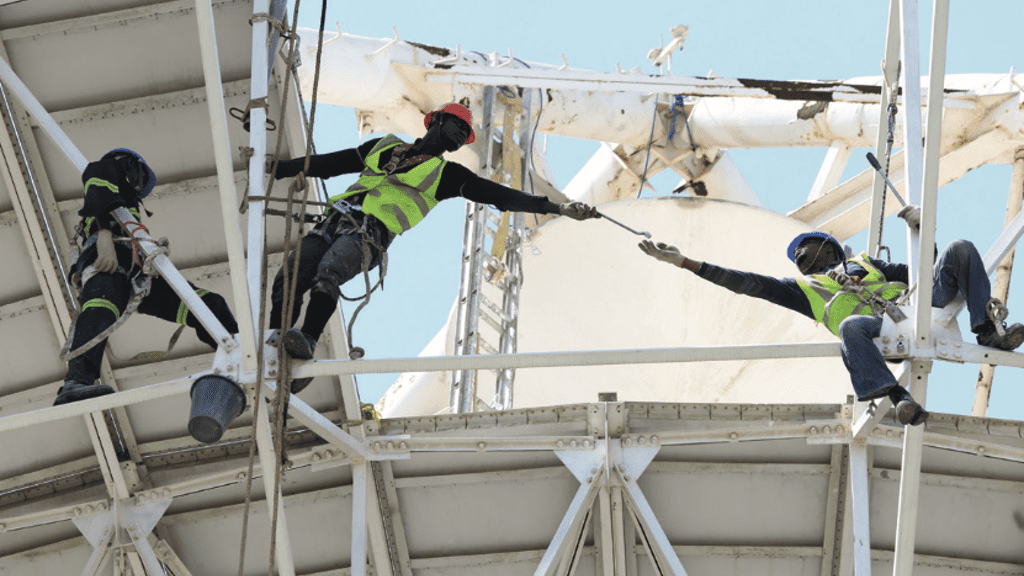Africa’s first radio telescope built outside of South Africa (S.A.) was recently inaugurated by astronomers and engineers in Ghana. Remarkably, the working radio telescope is actually a retrofitted old telecommunication dish.

Vision and legacy
Not too long ago, Michael Gaylard, the former director of South Africa’s Hartebeeshoek Radio Astronomy Observatory, was forced to take a break since the observatory’s telescope had to enter a two-year repair. So Gaylard decided to use his time to scour the continent for old telecommunication dishes hoping to find some that could be converted for astronomy. Using Google Maps, the scientist eventually hit jackpot when he found a big, old dish in Kuntunse near Accra, Ghana.
Converting the dish into a functional astronomical telescope, however, proved very challenging. The two instruments definitely share some common ground like both being specialized for receiving radio waves. However, all radio telescopes around the world are built from the ground up, designed and built to very clear specifications. In the case of the Kuntunse dish, though, African engineers and scientists had to work around an existing dish and settle for whatever specifications fit the established design. To make matters worse, Gaylard passed away in 2014 and the project was constantly marked by various minor to severe setbacks like frequent power outages and little to no internet connection.
Despite these adversities, the people behind the project made it happen — the first instrument in the upcoming African VLBI Network (AVN), Gaylard’s brainchild and postmortem legacy. VLBI stands for Very Long Baseline Interferometry, a technique used for imaging distant cosmic radio sources, spacecraft tracking, and for applications in astrometry. VLBI images a distant radio source, such as a quasar, by collecting its signal from multiple radio telescopes on Earth. Based on the time difference between the arrivals of the radio signal at different telescopes, it’s possible to combine observations of the objects that are made simultaneously by multiple radio telescopes. This way, scientists can emulate a telescope with a size equal to the maximum separation between the telescopes. In fact, most recently scientists turned on radio telescopes around the world to emulate a telescope the size of PLANET EARTH. Its target? The supermassive black hole at the center of the Milky Way galaxy. Just a year or two from now, you might jump from your chair as you read about the first pictures of a black hole’s event horizon. And what we learn from this experience might change science forever, to boot.
“At the very heart of Einstein’s general theory of relativity, there is a notion that quantum mechanics and general relativity can be melded, that there is a grand, unified theory of fundamental concepts,” says astronomy research professor Gopal Narayanan at the University of Massachusetts Amherst. “The place to study that is at the event horizon of a black hole.”
Mad Max Astronomy
Very exciting times ahead indeed and the AVN will have a huge role to play in science on the African continent. Besides the dish in Ghana, there are plans to convert telecommunications dishes in Zambia, Madagascar and Kenya by mid-2019. New telescopes could also be built in four other African nations by mid-2022. When fully completed, the AVN will fill the gaps in the global VLBI as it adds new ranges and angles in the network. For instance, our galactic center can be seen just south of the celestial equator, which puts many African countries like Ghana, Kenya or Zambia in a front-row position to optimally image it. Already, the Ghana radio telescope has begun work; it’s observing methanol masers, which are radio emissions that arise from celestial phenomena, and pulsars.

All of this was made possible thanks to funding made by the African Renaissance and International Co-Operation Fund, tied to the South African government. Around $9 million have been awarded to the project.
South Africa has a great deal of interest to see the AVN rooted in success. Along with Australia, South Africa is the site of the world’s largest radio telescope, the Square Kilometre Array. Hundreds and hundreds of radio dishes and antennas will be set up by late 2020s, with some stations planned in eight other African countries.


